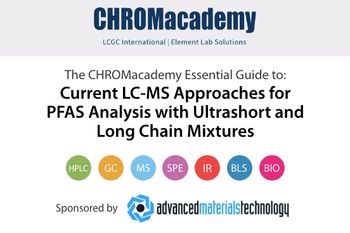
Ultrasound- and Microwave-Assisted Extraction Compared in Determination of Prescribed Antibiotics in Human Nails
Nails were evaluated for their suitability as non-invasive biomarkers for exposure to antibiotics, even those that are commonly prescribed.
A study in Spain, recently published in the journal Talanta, compared ultrasound-assisted extraction (UAE) and microwave-assisted extraction (MAE) to find which technique would be more suitable in sample preparation for ultrahigh-pressure liquid chromatography–tandem mass spectrometry (UHPLC–MS/MS) detection of 17 widely prescribed antibiotics in human nails (1).
Researchers affiliated with the University of Granada and the University of Seville sought an analytical method to monitor antibiotic levels not only in humans, but also the overall environment, as they said these compounds may cause allergic reactions or an inducement of antibiotic resistance if not controlled, as directed, in human and veterinary medicine – or occasionally as growth hormones, although this usage often occurs without permission.
For this study, finger and toenails of 10 people from Spain, between the ages of 14 and 60, were chosen because those samples, like hair, are keratinized human matrices that accumulate substances over extended periods of time and are able to retroactively indicate past drug use (1). Although nails are of increasing forensic usefulness, this study claimed to be the first to use nails to determine different families of antibiotics within the human blood supply. The researchers said that to their knowledge, several of the subjects had not consumed antibiotics in the two years prior to submitting their samples.
US Food and Drug Administration (FDA) guidelines were followed in examining the accuracy, linearity, selectivity, and sensitivity of the two extraction methods under comparison (1). What the study found was that for purposes of quantifying the 17 antibiotics in question, the MAE procedure, consisting of two extraction cycles run with methanol at 88 ºC for 1 min, was preferable to UAE because it showed superior efficacy and viability.
Once MAE was performed, further analysis using UHPLC–MS/MS with a 20 min runtime detected the antibiotic sulfamethoxazole (SMX) in the nails of all 10 volunteers, with the study additionally revealing that danofloxacin (DAN) and levofloxacin (LEVO) were also commonly found in the samples, and that each of the remaining 14 antibiotics under scrutiny was identified in at least one of the 10 volunteers. Limits of detection for this experiment were set between 0.3 and 3 ng/g, with limits of quantification from 1.0 to 4.0 ng/g. Recoveries were reported in the range of 87.5% to 114.2%, with standard deviation of less than 15% (1).
The authors of this study interpreted their results to suggest that bioaccumulation of antibiotic compounds can be suitably quantified by examining human nails, which absorb the antibiotics into the bloodstream, and propose the use of these samples for future research.
Reference
(1) Gómez-Regalado, M.d.C.; Espín-Moreno, L.; Martín-Pozo, L.; Zafra-Gómez, A. Analytical method for the determination of usually prescribed antibiotics in human nails using UHPLC–MS/MS. Comparison of the efficiency of two extraction techniques. Talanta 2023, 262, 124687. DOI:
Newsletter
Join the global community of analytical scientists who trust LCGC for insights on the latest techniques, trends, and expert solutions in chromatography.




